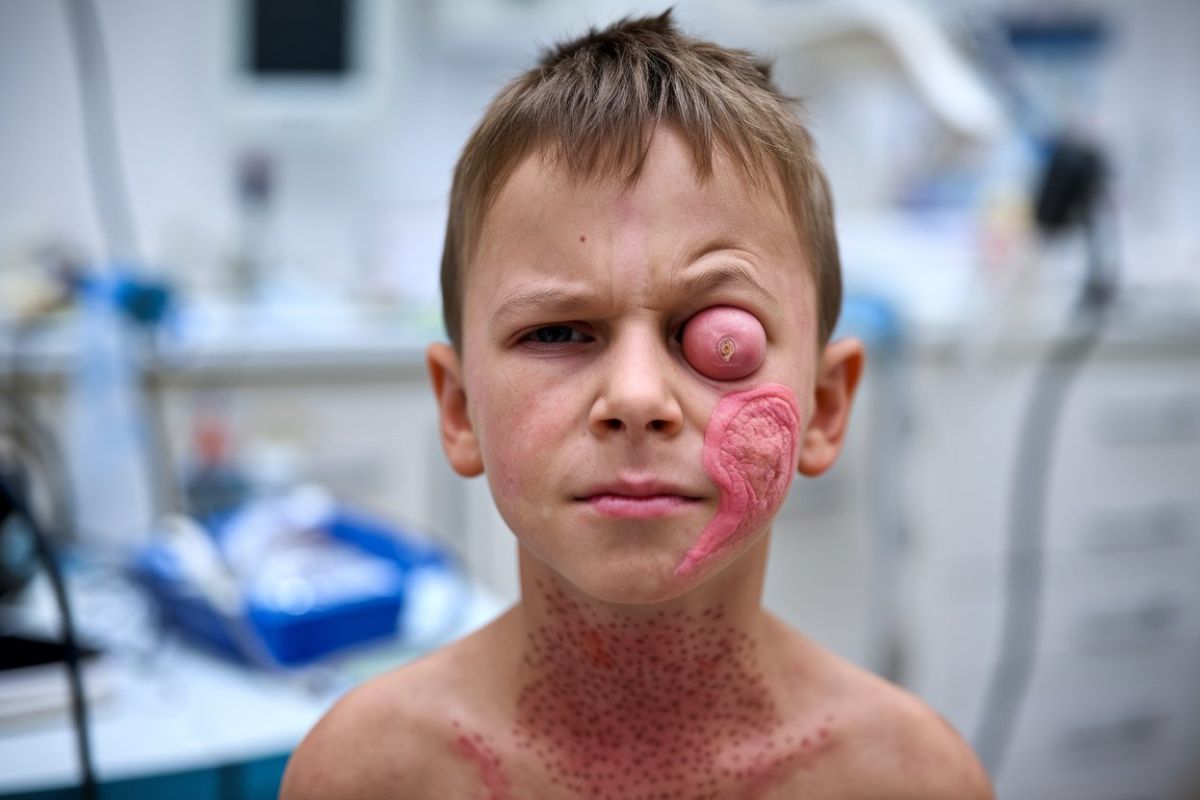
Wolcott-Rallison Syndrome is a rare genetic disorder that primarily affects infants and young children. Characterized by early-onset diabetes, this condition also impacts bone development, liver function, and the immune system. Caused by mutations in the EIF2AK3 gene, it disrupts protein synthesis and cellular stress responses. Children with this syndrome often face growth delays, skeletal abnormalities, and recurrent infections. Early diagnosis and management are crucial for improving quality of life. In this post, we'll explore 30 intriguing facts about Wolcott-Rallison Syndrome, shedding light on its symptoms, genetic basis, and current treatment options. Get ready to learn more about this complex condition!
Key Takeaways:
- Wolcott-Rallison Syndrome is a rare genetic disorder affecting children, causing diabetes, growth issues, and other complications. Early diagnosis and multidisciplinary care can improve outcomes and quality of life.
- Research and ongoing clinical trials offer hope for better treatments and outcomes for Wolcott-Rallison Syndrome. Support groups and educational accommodations can help families cope with the unique challenges of this condition.
What is Wolcott-Rallison Syndrome?
Wolcott-Rallison Syndrome (WRS) is a rare genetic disorder that primarily affects infants and young children. It is characterized by a combination of symptoms that can vary widely among those affected. Here are some intriguing facts about this condition.
-
WRS is an autosomal recessive disorder, meaning both parents must carry the gene for a child to be affected.
-
The syndrome is caused by mutations in the EIF2AK3 gene, which plays a role in protein synthesis and stress response.
-
Diabetes mellitus is often the first symptom, usually appearing within the first few months of life.
-
Growth retardation is common, with many children experiencing delayed growth and development.
-
Epiphyseal dysplasia, a condition affecting the growth plates of bones, often leads to skeletal abnormalities.
Symptoms and Diagnosis
Understanding the symptoms and how WRS is diagnosed can help in early detection and management.
-
Liver dysfunction is a frequent complication, sometimes leading to liver failure.
-
Kidney problems such as renal insufficiency can occur, requiring careful monitoring.
-
Pancreatic exocrine insufficiency may develop, affecting digestion and nutrient absorption.
-
Neurological issues like intellectual disability and developmental delays are often present.
-
Frequent infections due to a weakened immune system are common in children with WRS.
Treatment and Management
While there is no cure for WRS, various treatments can help manage the symptoms and improve quality of life.
-
Insulin therapy is essential for managing diabetes in WRS patients.
-
Growth hormone therapy may be used to address growth retardation.
-
Liver transplantation might be necessary in severe cases of liver dysfunction.
-
Physical therapy can help manage skeletal abnormalities and improve mobility.
-
Nutritional support is crucial, especially for those with pancreatic insufficiency.
Genetic and Research Insights
Research into the genetic aspects of WRS is ongoing, providing new insights into the condition.
-
Genetic testing can confirm a diagnosis of WRS by identifying mutations in the EIF2AK3 gene.
-
Carrier screening for parents can help assess the risk of having a child with WRS.
-
Animal models are being used to study the disease and develop potential treatments.
-
Stem cell research holds promise for future therapies that could address the underlying genetic causes.
-
International registries are being established to collect data and improve understanding of WRS.
Living with Wolcott-Rallison Syndrome
Living with WRS presents unique challenges, but support and resources are available to help families cope.
-
Multidisciplinary care involving endocrinologists, hepatologists, nephrologists, and other specialists is essential.
-
Support groups can provide emotional and practical support for families affected by WRS.
-
Educational accommodations may be necessary for children with intellectual disabilities.
-
Regular monitoring of blood sugar levels, liver function, and growth is crucial for managing the condition.
-
Emergency plans should be in place for managing acute complications like infections or diabetic ketoacidosis.
Prognosis and Future Directions
The prognosis for WRS varies, but ongoing research offers hope for better treatments and outcomes.
-
Life expectancy can be reduced due to complications, but early diagnosis and management can improve outcomes.
-
Quality of life can be enhanced with appropriate medical care and support.
-
New therapies are being explored, including gene therapy and targeted treatments.
-
Clinical trials are ongoing to test new drugs and interventions for WRS.
-
Awareness campaigns aim to educate healthcare providers and the public about WRS, promoting early diagnosis and intervention.
Final Thoughts on Wolcott-Rallison Syndrome
Wolcott-Rallison Syndrome (WRS) is a rare genetic disorder that primarily affects children. It’s caused by mutations in the EIF2AK3 gene, leading to early-onset diabetes, skeletal abnormalities, and growth delays. Understanding WRS can help in early diagnosis and better management of symptoms. Though there’s no cure, treatments focus on managing diabetes and other complications. Genetic counseling is crucial for families affected by WRS to understand the risks and implications. Research is ongoing, offering hope for future advancements in treatment. Awareness and education about WRS can lead to improved support for those living with this challenging condition. Stay informed, support research, and advocate for those affected by Wolcott-Rallison Syndrome.
Frequently Asked Questions
Was this page helpful?
Our commitment to delivering trustworthy and engaging content is at the heart of what we do. Each fact on our site is contributed by real users like you, bringing a wealth of diverse insights and information. To ensure the highest standards of accuracy and reliability, our dedicated editors meticulously review each submission. This process guarantees that the facts we share are not only fascinating but also credible. Trust in our commitment to quality and authenticity as you explore and learn with us.


